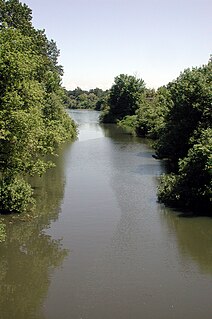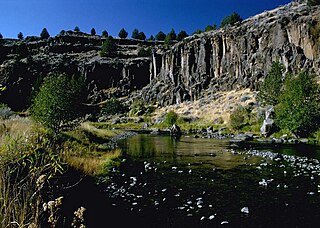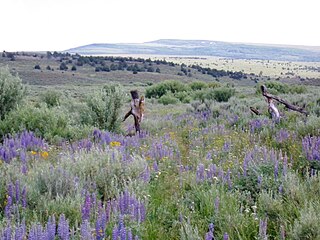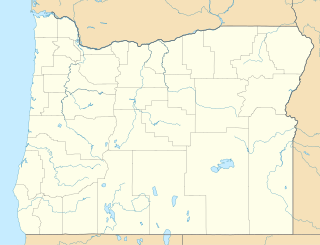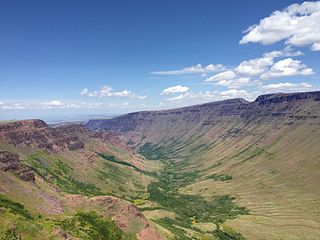Whorehouse Meadow [1] is a meadow located on the western slope of Steens Mountain southeast of Frenchglen, Oregon, United States. It lies within the Steens Mountain Wilderness. Lewis McArthur, writing about the landmark in Oregon Geographic Names , describes it as an "accessible but secluded meadow a mile east of Fish Lake." [2]

A meadow is an open habitat, or field, vegetated by grass and other non-woody plants. They attract a multitude of wildlife and support flora and fauna that could not thrive in other conditions. They provide areas for courtship displays, nesting, food gathering, pollinating insects, and sometimes sheltering, if the vegetation is high enough, making them ecologically important. There are multiple types of meadows, such as agricultural, transitional, and perpetual, each important to the ecosystem. Meadows may be naturally occurring or artificially created from cleared shrub or woodland.

Steens Mountain is in the southeastern part of the U.S. state of Oregon, and is a large fault-block mountain, Located in Harney County, it stretches some 50 miles (80 km) north to south, and rises from alongside the Alvord Desert at elevation of about 4,200 feet (1,300 m) to a summit elevation of 9,733 feet (2,967 m). It is sometimes confused with a mountain range but is properly a single mountain.

Frenchglen is an unincorporated community in Harney County, Oregon, United States. It is 60 miles (97 km) south of Burns on Oregon Route 205 and its population is approximately 12.
The meadow acquired its name in the days of the Old West. Entrepreneuring women from Vale, Oregon, would set up wood and canvas tents in the meadow to provide services to the sheepherders and cattlemen of the area. Many of the sheepherders were Basque American immigrants, and their sometimes explicit carvings can still be found in the bark of aspen trees surrounding the meadow. The name was changed in the 1960s to "Naughty Girl Meadow" on Bureau of Land Management maps, but in 1981 the old name was restored after public outcry. [3] Whorehouse Meadow has frequently been noted on lists of unusual place names. [4] [5]

Vale is a city in and the county seat of Malheur County, Oregon, United States, about 12 miles (19 km) west of the Idaho border. It is at the intersection of U.S. Routes 20 and 26, on the Malheur River at its confluence with Bully Creek.
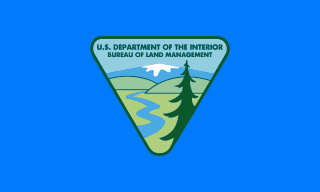
The Bureau of Land Management (BLM) is an agency within the United States Department of the Interior that administers more than 247.3 million acres (1,001,000 km2) of public lands in the United States which constitutes one eighth of the landmass of the country. President Harry S. Truman created the BLM in 1946 by combining two existing agencies: the General Land Office and the Grazing Service. The agency manages the federal government's nearly 700 million acres (2,800,000 km2) of subsurface mineral estate located beneath federal, state and private lands severed from their surface rights by the Homestead Act of 1862. Most BLM public lands are located in these 12 western states: Alaska, Arizona, California, Colorado, Idaho, Montana, Nevada, New Mexico, Oregon, Utah, Washington and Wyoming.

Unusual place names are names for cities, towns, and other regions which are considered non-ordinary in some manner. This can include place names which are also swear words, inadvertently humorous or highly charged words, as well as place names of unorthodox spelling and pronunciation, including especially short or long names.
